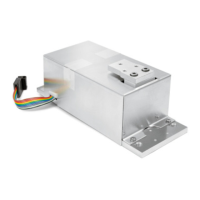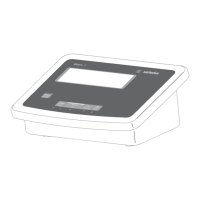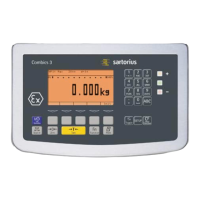Maximum Permissible Load on Load Receptor:
Model Max. torque Screwing torque + F
z
Max. force opposite to Max. forces on force
direction of load (-F
z
) holding point F
x
, F
y
WZA224-L, WZA224-LC 0.8 Nm 1 Nm 20 N 3 N 20 N
WZA54-L 0.1 Nm 0.5 Nm 2 N 2 N 2 N
WZA523-L 0.8 Nm 1 Nm 25 N 6 N 25 N
WZA8202-L 8 Nm 3 Nm 100 N 100 N 80 N
You can either have the maximum force or the maximum torque.
If forces and torque occur simultaneously, then the sum of the
percentage loads cannot exceed 100%.
Higher loads may result in damage to the weigh cell.
Example:
Weigh cell with hook projecting out to the front.
Torque M
y
is the sum of the torque from the force of the weight
W
load
, the torque of any excess weight being exerted W
ex
and the
torque created by the intrinsic weight W
hook
holding the weight.
The force is F
z
is equal to weight force F
load
, plus the weight force
of hook F
hook
and the overload force F
over
.
What is the maximum off-center overload force F
over
for a
WZA224-L with a load of M
load
= 100 g and a hook length L of
100 mm for a standard weight of m
hook
= 60 g?
The sum of the percentage weighing capacity of the forces and
torques occurring may not exceed 100%.
1 = F
z
/ F
zMax
+ M
y
/ M
Max
F
z
= F
load
+ F
hook
/ F
over
F
z
= 1.57N + F
over
M
y
= M
load
+ M
hook
+ M
over
M
y
= 1.27 Nm + F
over
+ 0.1 m
1 = (1.57 N + F
over
/ 20 N + (0.127 Nm + F
over
+ 0.1 m / 0.8 Nm
F
over
= 4.36 N
However, even very small forces can trigger the overload protection
mechanism.
In general, load receptors should be constructed to be rigid to
bending and twisting. We recommend testing to avoid unwanted
feedback effects in the control loop. You should also take into
account the effects of drafts and observe all instructions for
analytical weighing.
Force holding point
8

